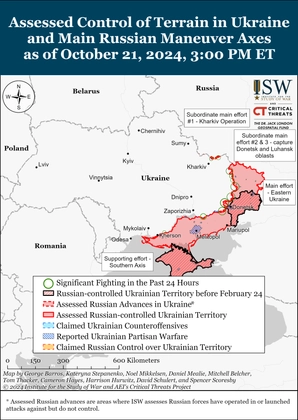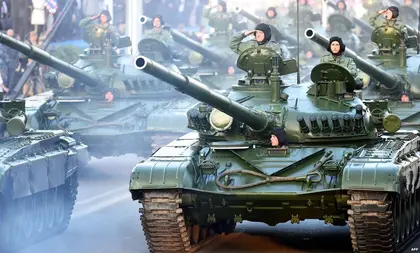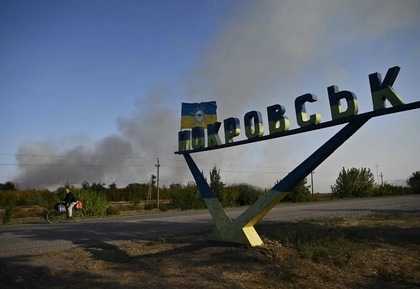This autumn in the forest-steppe around Kharkiv will be memorable for many. Obviously more for the Russians and their ORDLO-henchmen, who for some time now are being hunted down in several oblasts, both by Russian-Chechen punishment squads and the Ukrainian Army.
Such a technical knockout was last seen in Europe in the Balkans, in the summer of 1995, when the idea of a Greater Serbia, a precursor to the Russki Mir, or Russian world tried to spread. Could these two events, nearly 30 years apart in time, be related?
It is no exaggeration to say that there has not been a counter-attack of this scale and spectacular effect in Europe since 1995 (and before that in World War II), when Operation Storm (Operacija Oluja) began. Unlike Russia’s campaign of aggression in Ukraine, this was a genuine special military operation, but also the last major battle of the Croatian War of Independence, which largely determined the outcome of the Bosnian war.
At 05:00 on the morning of August 4, 1995, the Croatian armed forces launched an operation along a 630-kilometer frontline to regain control of the Serbian-backed and self-proclaimed Serbian Krajina quasi-state. The issue concerned a territory of more than 10,000 square kilometers, representing nearly a fifth of the territory of the Republic of Croatia.
Patience and preparation ensure success
The operational plan consisted of four separate phases (Storm-1 to Storm-4), which were divided between the different battlegroups according to their areas of responsibility, and each phase was initially planned to last four to five days.

ISW Russian Offensive Campaign Assessment, October, 22, 2024
For the assault, over 130,000 Croatian and 3,000 Bosnian troops were prepared under five army corps (Split, Gospić, Karlovac, Zagreb and Bjelovar). Separately, a sixth zone was assigned to Croatian special police forces in the area of responsibility of the Split Corps, near the border with the Gospić Corps.
The campaign began with coordinated strikes by the Croatian Air Force against headquarters, logistics and communications networks. The UN peacekeeping forces in the area on a UNCRO (United Nations Confidence Restoration Operation in Croatia between 1995 to 1996) mission, were informed three hours before the start of the operation. In addition, each army corps notified the UNCRO sector about its route for the imminent attack, requesting written confirmation of receipt of the information.
The peacekeeping forces also passed the information on to the insurgents, confirming the warnings that the latter had received the previous day from the Yugoslav army headquarters. However, this had no effect on the battlefield. Already by the evening of August 7, the Serbian Krajina and its armed forces had ceased to exist, despite considerable resistance pockets, which were finally liquidated by August 14.
A replay of the summer of 1995 in Donbass
This success was the result of several changes in the Croatian armed forces and decisive breakthroughs at rebel positions, which were later exploited by both Croatian and Bosnian forces. Here again, Ukraine has skillfully used the experience of others to its advantage.
Although the large-scale counterattack was not immediately successful everywhere, the capture of key positions culminated in a rapid collapse of the separatist command structure and overall defensive capabilities – total chaos ensued.
The lack of reserves, which the Croats and Bosnians exploited to their advantage, also became a decisive factor in the failure of the pro-Serbian separatists, as the static defenses were unable to cope with rapid attacks.
The insurgents were also unable to control maneuvers outside the front line and their Special Forces corps failed as a mobile reserve, able to commit Croatia’s 1st Guards Brigade south of Slunj to combat for not even a day.[2]
On the battlefields of Ukraine, the same problems have presented themselves to the occupiers time and again. With some differences, a similar outcome to the 1995 Croatian operation is developing in the Donbas. The same mistakes and shortcomings of the occupiers show that Moscow is incapable of learning both from its own and its henchmen’s experience.
The Krajina separatists traditionally relied on the Bosnian Serb and Yugoslav Armies as a strategic reserve, but the situation in Bosnia and Herzegovina immobilized the Serb reserves there and Yugoslavia did not intervene militarily.
The then-President Slobodan Milosevic (also a war criminal) did not dare order it – intervention would have given the Yugoslav Army very little time to send manpower and equipment to the separatists because of the speed of the fighting.
There are other similarities between the Russians and Serbs. For example, in response to the Croatian Army’s advances, separatists occasionally attacked numerous Croatian towns and villages with artillery and rockets.
Democracy strikes back
Yet Ukraine’s counter-offensive, whose code name is still unknown to the world, will be remembered with similar and conflicting emotions – the start of a victory for some, a technical knockout for others. But it leaves no one impartial because it has been a sobering blow for both the enemy and doubters.
Although it is not the last major battle, like operation Storm, it influences the course of outcome of the war. More importantly, especially for the occupiers, the key question is no longer so much whether Ukraine will retaliate, but rather, where the next knockout will be delivered. From such fear, it is only a few steps to paralysis.
The success around Kharkiv could spread elsewhere if smaller fronts activate and try to seize their momentum and move forward in local sectors as well. The moment is still rather opportune and full of uncertainty, complexity and chaos for the enemy.
Even general Winter can defect
Unlike in 1995, there is also a fair amount of mystery in the Ukrainian war plan, as the long-declared immediate liberation of Kherson has led to a build-up of occupiers in the south who are now trapped behind destroyed bridges with few supplies and little hope. Nor is there any consolation in the rigid prohibition to withdraw – a Stalingrad déja-vu.
Hard to say whether the counter-offensive around Kherson turns out to be merely a maskirovka, perhaps that is also part of a perfect storm, when at different times and intensities one phase begins only to usher in the next at a different location.
Nevertheless, Kyiv and Moscow have finally found a common theme – both are talking about a successful special military operation. This gives hope that talks regarding Russia’s capitulation could be getting closer. The evolution of Russian mobilization into emigration is at least a hopeful sign of this.
Ukrainians are fighting on their home turf, where they know every corner of the territory. Winter equipment is a technical, not an existential challenge as it is to the occupants.
The closer winter draws, the clearer it becomes to the occupiers that this time even general Winter could be on the Ukrainian side. No matter what Gazprom sings – after winter always comes spring …
The views expressed in this article are the author’s and not necessarily those of Kyiv Post.
You can also highlight the text and press Ctrl + Enter






